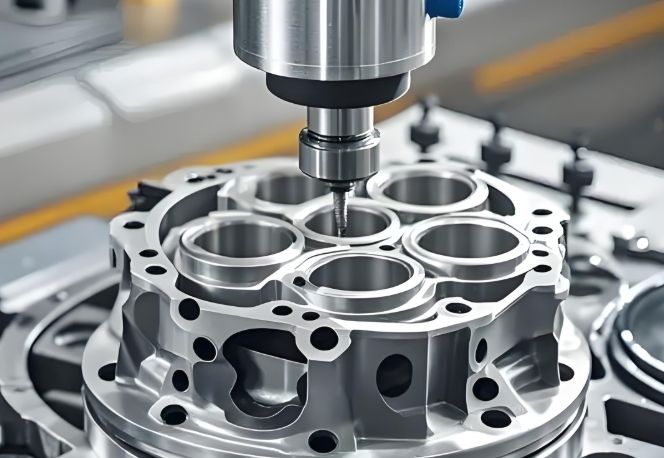
In the grand narrative of manufacturing's pursuit of carbon neutrality, certain precision technologies are quietly becoming the cornerstone of the green transition. Though they may not be in the limelight, they silently convey the key force of reducing carbon emissions within countless energy-efficient devices. The combination of precision CNC machining and advanced cold plate manufacturing technology is precisely such an environmental driver hidden deep within the industrial fabric. When cooling efficiency is increased by just 1%, the annual power consumption of server clusters may be reduced by hundreds of thousands of kilowatt-hours; when cooling systems operate more stably, the lifespan of electronic devices is extended, and the flood of electronic waste naturally slows down. These small but continuous improvements converge into the real path of sustainable development in manufacturing.
The core value of cold plate technology lies in its high thermal conductivity. As the key carrier of liquid cooling systems, it rapidly transfers waste heat generated by heat-generating components, significantly reducing the substantial fan energy consumption required by traditional air cooling. The precision of CNC machining is precisely where its environmental efficiency is unleashed. With multi-axis machining centers, engineers can carve out complex micro-channel networks inside metal substrates. These fine channels, like highways laid out for the coolant, maximize the heat exchange area and flow efficiency. Every optimized channel design means that, under the same cooling requirements, the coolant flow can be reduced, the pump power can be minimized, and the overall system power consumption can be lowered. This energy-saving potential at the source is the unique value that precision CNC brings to customized cold plates. A Nordic customer specializing in data center solutions once admitted that by optimizing the internal topology of customized cold plates, the cooling energy consumption per cabinet was astonishingly reduced by 17%. This was not achieved by piling up expensive hardware, but by the meticulous refinement of the underlying fluid design.
The environmental contribution of precision manufacturing is not limited to the operational phase. The essence of CNC machining is subtractive manufacturing, and through precise programming and tool path planning, material waste is controlled at an extreme level. A high-performance copper alloy or aluminum alloy cold plate blank, guided by intelligent programs, converts over 95% of the material into functional components, with most shavings effectively recycled. This high material utilization rate, compared to traditional extensive processing or casting processes, significantly reduces resource consumption and solid waste emissions. The metal waste sorting and recycling system implemented in our factory ensures that almost all aluminum and copper shavings generated during processing flow back into the smelting process, forming a closed-loop cycle. This almost obsessive cherishing of resources is the silent fulfillment of the precision manufacturing industry's environmental commitment. When you choose custom cold plates crafted by high-precision CNC, you are also indirectly choosing a more responsible production method for the planet's resources.

The application scenarios of cold plates are often directly related to the cutting edge of green technology. Whether it is supporting the liquid cooling of wind turbine converter in the renewable energy field, ensuring the stable and safe operation of the thermal management system of electric vehicle battery packs, or driving the stable computing of high-efficiency data center server chips— these technological nodes that drive society's low-carbon transition rely greatly on the high-performance of internal precision cold plates. The ability to customize cold plates enables engineers to tailor the best solutions for these unique application scenarios: integrating irregular cold plates in the confined space of a wind turbine converter, embedding lightweight, low-flow resistance cooling channels in the battery pack, and arranging extremely compact multi-layer micro-channels on server blades. The flexibility of CNC technology allows these innovative designs to quickly move from paper to reality, accelerating the implementation of green technologies. A German engineer involved in the design of a large solar power station inverter once reported that the improved thermal balance brought by customized cold plates extended the expected lifespan of key power devices by more than 30%, which directly reduced the frequency of equipment replacement and the associated carbon footprint.
From lean production that saves materials, to the manufacturing of key components that improve the efficiency of energy-consuming equipment, to the basic cooling support that empowers the new energy revolution, precision CNC machining and cold plate technology weave an invisible network of green efficiency. They are not environmental slogans hanging on the wall, but concrete actions integrated into the product life cycle. Every in-depth simulation for optimizing channels, every nano-scale surface treatment to improve sealing, and every metal sheet processed with almost zero waste are all adding incremental positive impacts to the sustainable development of manufacturing. When we pursue perfection at the micron level, the macro-world's energy consumption curve quietly bends downward.
To explore how precision CNC manufacturing can work with your products to achieve better energy efficiency and lower carbon footprints, please visit www.simituo.com to learn more about our technologies and capabilities. We believe that the most effective environmental protection often arises from the most precise technical details, continuously contributing a solid and calm force to a clean future.